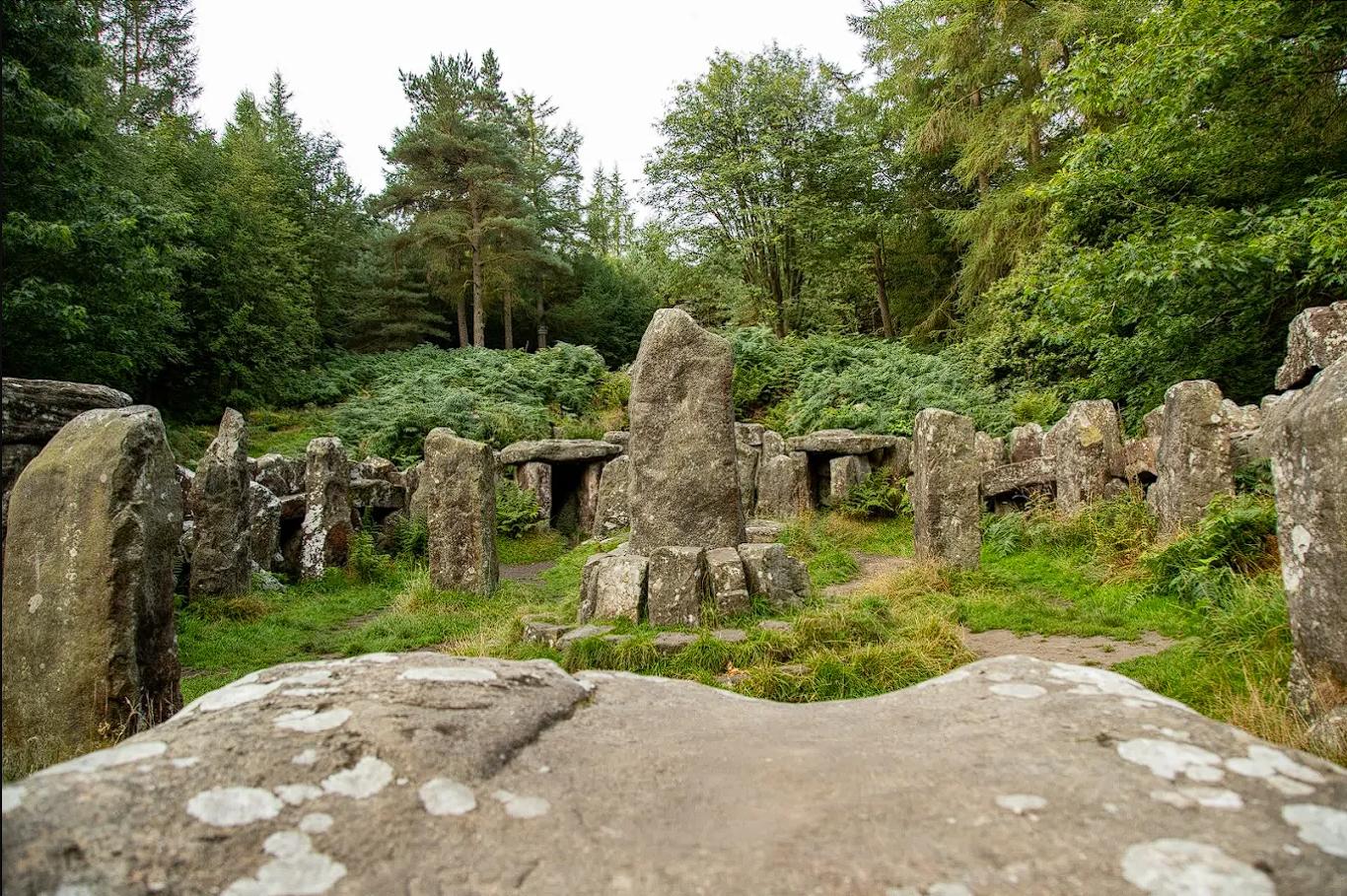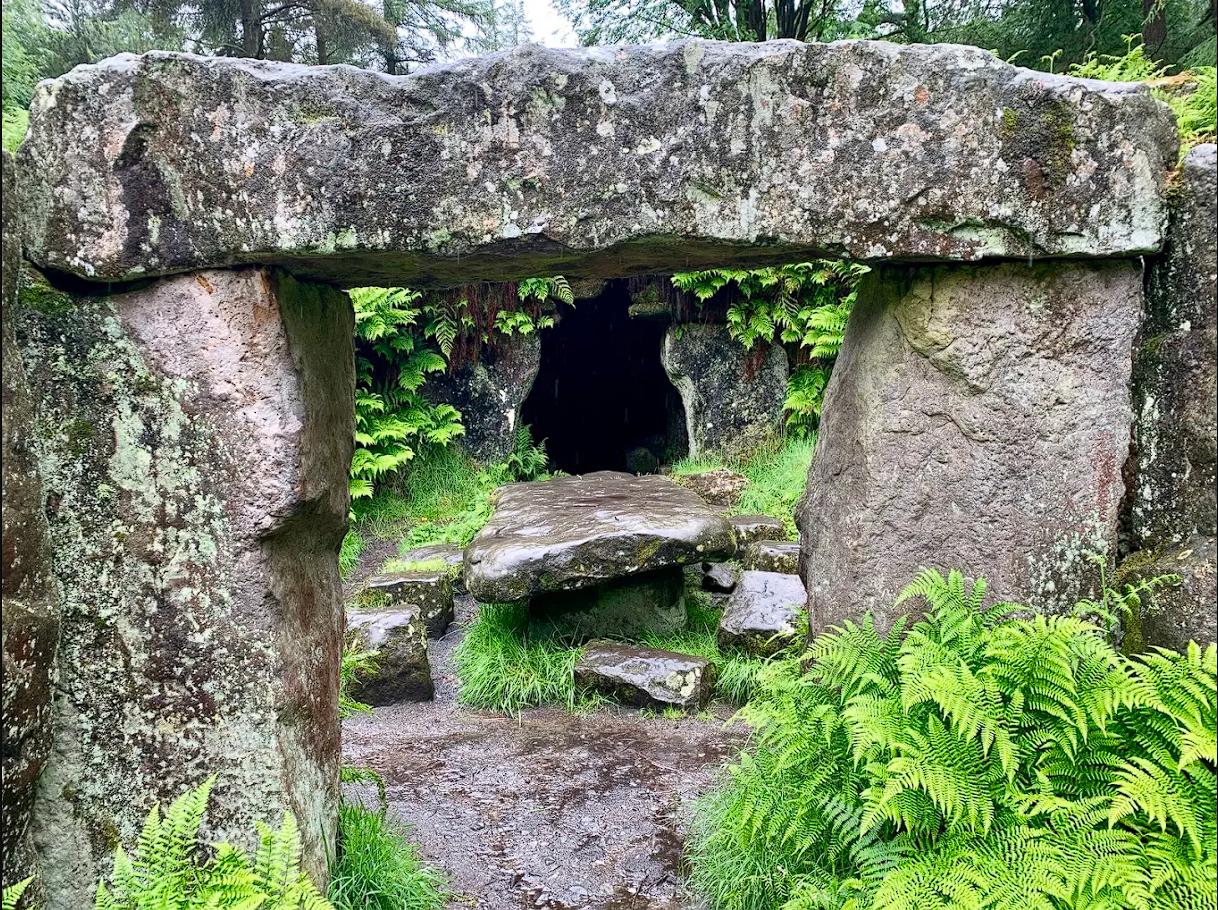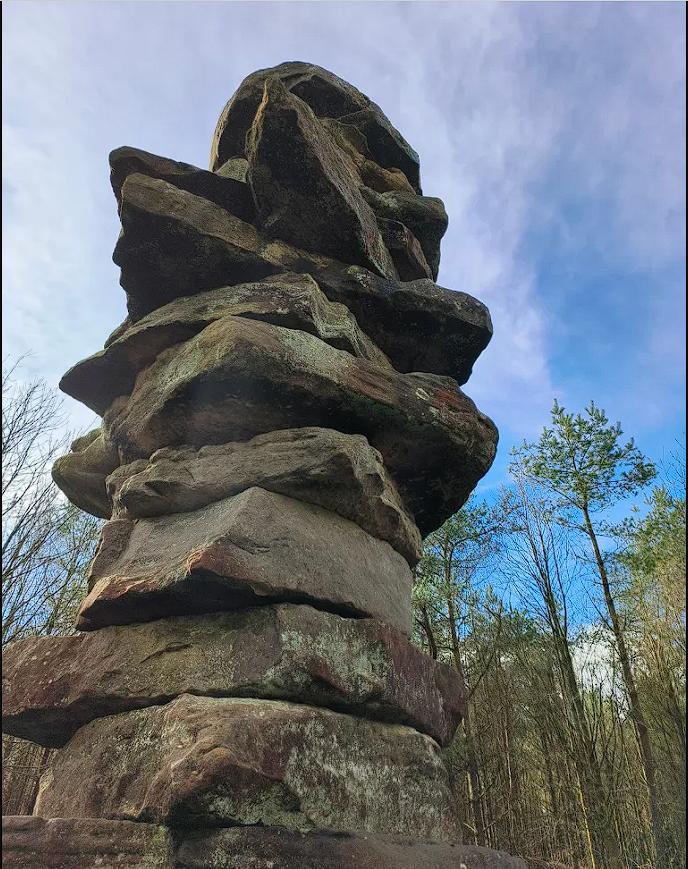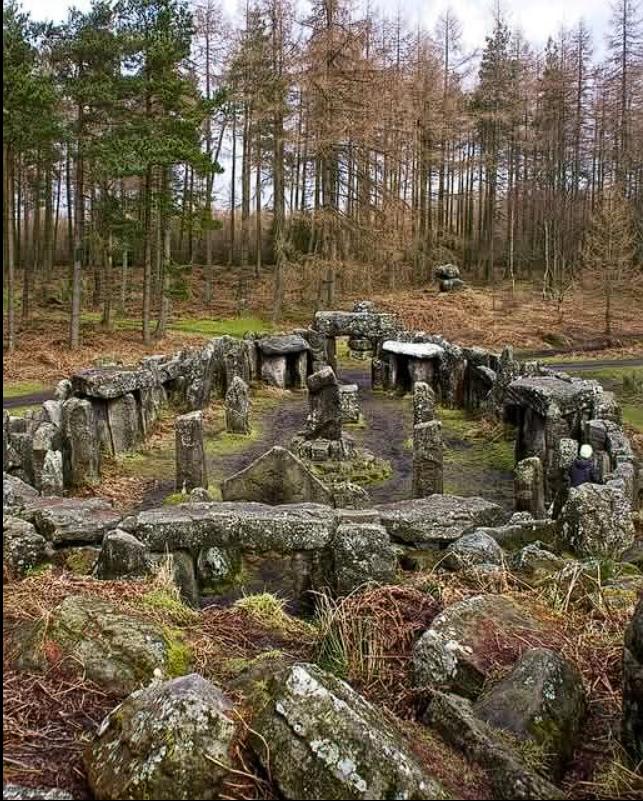The Druid Temple of Yorkshire: A Timeless Illusion Shaped by Hardship
In the silent woods of Yorkshire, where the trees lean close and time seems to slow, there stands a structure that might, at first glance, appear lifted from the mists of Celtic legend. Giant stones stand in solemn formation, towering and circular, as if placed by ancient hands in worship of the sun or stars. Visitors often draw comparisons to Stonehenge, expecting tales of druids, solstices, and arcane rites.
But this site, known locally as the Druid’s Temple of Yorkshire, is no prehistoric relic. It is, in truth, a monument not to mystery, but to human endurance—a temple not of the gods, but of grit.
A Temple Born of Necessity: The True Story Behind the Stones
The 19th-Century Crisis That Sparked a Monument
The story begins not in the Bronze Age, but in the early 1800s. As the Industrial Revolution swept through England, not all regions shared in the prosperity. In rural North Yorkshire, economic hardship gripped the countryside. Jobs were scarce. Hunger spread. And in these desperate times, even modest work could mean survival.
It was during this period that William Danby, a wealthy squire of the Swinton Park estate, stepped forward—not with speeches or soup kitchens, but with stone. Believing that labor could restore dignity and income to the unemployed, Danby devised an unusual public works project: the creation of an artificial “Druid temple” in the style of ancient megaliths.
He offered local laborers one shilling per day—a humble wage, but a lifeline in lean times.
Labor with Meaning: Building the Temple of Illusion
With pick and hammer, men moved massive stones into place. They carved, lifted, and aligned. The design was inspired by antiquity but guided by imagination. The central altar stone, the surrounding circle, the carefully placed entrance stones—they mimicked the sacred symmetry of ancient henges, but without any connection to ritual astronomy.
Still, what they created was more than imitation. It was a monument to perseverance, built by men who may have otherwise faced hunger or migration. Every stone bore the mark of hands not seeking glory, but survival.
Exploring the Druid’s Temple: A Man-Made Mystery in Nature’s Embrace
A Surprising Sight Amid Yorkshire’s Forests
Nestled within the woods near Ilton, on the edge of the Swinton Estate, the Druid’s Temple feels hidden from time. It’s easy to see how visitors might believe they’ve stumbled upon something ancient and sacred. The moss-covered stones, the circular layout, the hush of the forest—all lend the site a sense of reverence.
A short walk through the forest reveals the first monoliths, arranged in concentric circles. A larger central stone lies flat, flanked by vertical slabs that tower like sentinels. There’s even a stone chamber or “sanctuary” that mimics the idea of an inner sanctum—though it was built only two centuries ago.
More Than a Curiosity: The Emotional Weight of the Site
To walk among the stones is to experience more than architectural mimicry. There’s a quiet dignity to the place. One can almost feel the weight of the stories not told—of workers with calloused hands, of evenings spent laying cold stone under overcast skies. This was not sacred ground in the traditional sense, but it has become so in another: a place where human resilience took form.
The Druid Temple in Yorkshire bridges the line between fantasy and survival, a fictional history etched with real sacrifice.
From Folly to Folklore: The Temple’s Role in Local Imagination
Over the years, the temple has taken on a life of its own. Though it was originally a landscape folly—an artificial ruin built to entertain or evoke awe—it has since become a place of local lore and quiet pilgrimage. Some claim the stones are haunted. Others host solstice gatherings or silent meditations within its ring.
Though it lacks any true druidic past, the site continues to spark curiosity and spiritual reflection—proof that history does not need to be ancient to feel profound.
The Druid Temple’s Legacy: Crafting Meaning From Despair
Not Ancient, But Still Sacred
While it may not date to the Neolithic period, the Druid Temple of Yorkshire holds something just as powerful: the evidence of human will in the face of adversity. William Danby’s vision, though eccentric, offered work and hope in a time when both were scarce.
In a modern world obsessed with authenticity, the temple reminds us that even artificial monuments can become sacred when infused with genuine effort and purpose.
Echoes of Stonehenge—And a Message All Its Own
The visual similarities to Stonehenge are no accident. Danby wanted his temple to evoke awe, perhaps even to confuse posterity. But unlike Stonehenge, which tracks the sun and seasons, this site tracks something more personal: the intersection of art, labor, and human need.
Its grandeur lies not in ritual significance, but in the quiet heroism of everyday men—those who traded exhaustion for wages, carving a timeless illusion from the raw Yorkshire earth.
A Testament to Created History
We often treat history as something inherited, passed down through ancient bones and distant empires. But the Druid Temple of Yorkshire is a reminder that history can also be made—crafted intentionally, born of circumstance, and imbued with new meaning by those who come later.
It stands not because of conquest or kingship, but because one man believed in the dignity of work, and many hands gave shape to that belief.
Visiting the Temple Today: Wonder, Solitude, and Story
Today, the Druid’s Temple near Ilton remains open to visitors. Managed as part of the Swinton Estate, the site is accessible via footpaths through forests and open moorland. There are no guides or fences—only stone, trees, and silence.
It is, in many ways, a living monument. Children play among the stones. Couples pose for photos. Travelers pause to reflect. Each visitor adds a new chapter to the temple’s evolving story—a story born not from the mists of time, but from a very human desire to endure, to create, and to believe in something lasting.
Final Thoughts: When Stone Speaks of Struggle
The Druid Temple of Yorkshire may not mark celestial alignments or ancient sacrifices. It doesn’t whisper the names of forgotten gods. But it does speak—clearly and powerfully—of something else: the spirit of people who turned adversity into legacy.
In the end, the most enduring monuments are not always those that rise from ritual, but those carved from resilience.

CÁC TIN KHÁC
Mary Walton: The Forgotten Inventor Who Helped Clean Up America’s Cities
Tomb of Queen Nefertari in the Valley of the Queens, Egypt
Discover the Hypostyle Hall of the Temple of Hathor at Dendera
Venus de Losange: Unveiling the Mystery of a 20,000-Year-Old Paleolithic Icon